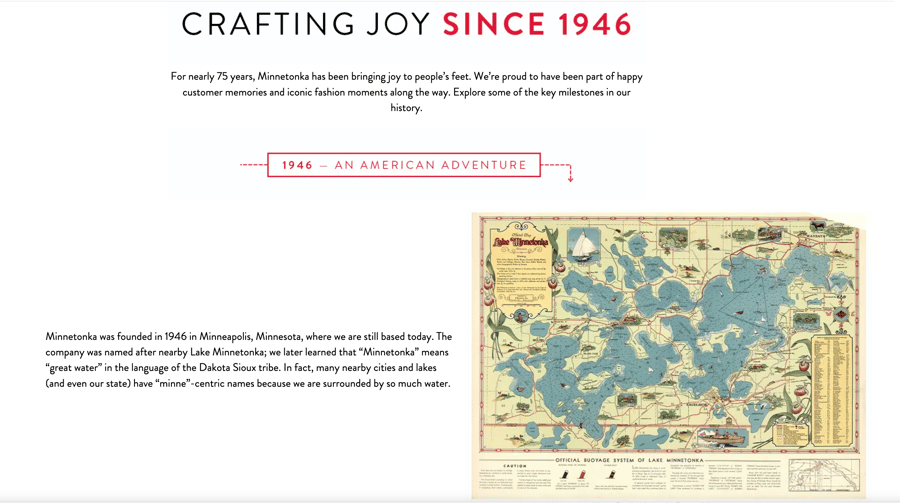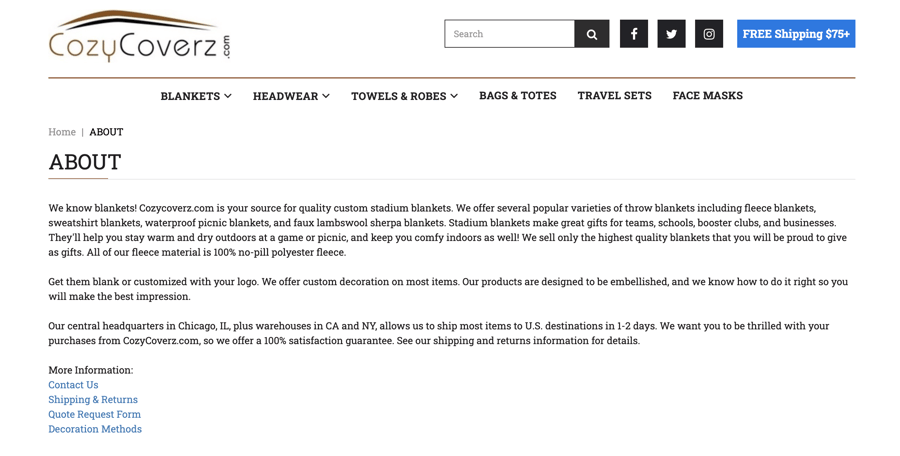
Every eCommerce business has a unique story. Maybe they started their business in home kitchens and managed to expand their empire internationally. Perhaps they started by providing their products to community members in need. Regardless, an engaging narrative can be a massive boon to any business when it’s told right.
You can create a retail brand that establishes a powerful personal connection with customers by sharing a powerful story. It shows your business's approachable, human side and allows you to differentiate yourself from the competition. After all, plenty of eCommerce shops may sell products similar to yours, but your story will be what truly sets you apart and grabs the attention of potential customers.
Even if you’re not a professional writer, there are still plenty of ways that you can effectively communicate with your audience. Remember, the goal is to tell your story in a compelling way that inspires confidence and trust in your brand.
What is a Brand Story?
With all of this talk of “narrative” and “brand story,” it may be a good time to elaborate on the concept. Many people assume it is the detailed history of your company. While that is undoubtedly a large part, the application and use of your brand story go a bit farther than that.
Essentially, your brand story is supposed to be the narrative behind your business that will evoke the feelings you want to be associated with your brand and show its purpose. Factors influencing this include price, product, quality, and branding.
Yes, every business has a narrative, regardless of how “typical” they may seem. And they all need that story told. Irrespective of your industry, every customer can appreciate the message and emotions conveyed by a narrative.
Why is Business Storytelling Important?
Before getting into the weeds on how to tell a brand story, it’s essential to understand why your brand should care about the concept in the first place. The last thing you want is to miss out on sales or traffic due to ignoring or neglecting to tell your narrative.
It engages your audience.
A large part of your brand's purpose is to engage your audience. When you allow your business to talk about itself, you will enable it to differentiate itself from others in a similar niche. Think of it like a conversation — your brand story is a way for you to communicate what your product or service can do for them and what makes it great.
Your customers will respond by remembering you — be it through great prices or marketing. After all, stories are remembered up to 22 times more than facts alone.
Your audience will write about you, review products, talk about your exciting history and quirks, and share it with people who will be similarly interested in what you have to provide. As a result, you will attract more of your target consumers. Above all, you will stay in the minds and hearts of your audience for a longer time.
It creates loyalty.
When a brand sticks around in the mind of its consumers, that audience is more likely to be loyal to that brand. After all, whichever brand is better remembered will win out in your customers' minds. You can think of your story as a sort of emotional glue that adheres to the minds of your audience. This is especially important in the digital age, where everyone shares everything.
Perhaps your products provide a sense of comforting nostalgia. Maybe your brand has a particular identity that your customers identify with (such as with Apple) or creates an aspirational mindset and goal (like with Weight Watchers). Either way, creating a solid brand story — and understanding how to utilize the emotions and psychology behind it — can be a potent marketing tool.
Feelings are remembered and shared more than facts. People are much more likely to talk about how your company started in a garage than your latest product's newest features. Even if you don’t believe your story is inspiring, there is likely something you can leverage that people will be attracted to.
It gives you a competitive edge.
Creating a refreshing, memorable brand story gives your business a definite edge over others in your niche. After all, crafting a narrative is about showing off what makes you different from the competition. You may be the only one using certain high-quality ingredients or parts in your product. Your brand may inspire trust in certain members of your community, letting others of a similar demographic know that you are worth buying from. Inspiring this trust and loyalty within your audience is never a bad thing. In fact, this can lead to a greater instance of repeat customers that spread your message and branding through word of mouth.
Regardless of how your story inspires your audience to enjoy what you have to provide, it is essential to leverage it continuously. If you build it, they will come. All you have to do is put together the pieces in a way that your target demographic can easily find and enjoy. You may want to share your story on social media or even send out that information on printed material with your orders. Before you know it, you will see that your customers are interested in what you have to say and want to learn more.
How to Tell an eCommerce Brand Story in 5 Steps
It’s easy enough to discuss why sharing your brand story is important. However, the task itself can seem somewhat overwhelming. You may be asking questions such as “Where do I start?” and “How do I make my story compelling?” Fortunately, you can take steps to make your brand narrative more visible and digestible.
Step 1: Explain why you started your store.

Source: Venetian Bead Shop
You started a business! That’s a big deal. Crossing that line past having a great idea is a huge step in your entrepreneurial journey. Believe it or not, people are drawn into why people do what they do and what gets them there. It shows the human side of your business that had to genuinely work to reach its aspirations.
For example, Shift4Shop’s very own Venetian Bead Shop talks about how a passion for Italian culture and crafts inspired their successful business to create authentic, artisan products for their customers. They share this story on their “About Us” page, which is the ideal location for your own brand story.
Whether your business’s origin story is informational, aspirational, or simply unique, it will likely grab your audience's attention. Not only does this help to differentiate your store from others, but it allows you to add a point of emotional contact for potential customers. It should also indicate your brand values and ethos that your customers will appreciate.
Step 2: Show your passion and expertise.

Source: Aaron's Homestead
Plenty of online retailers are passionate about the products they sell. After all, many people create and sell things out of a labor of love. That likely shows in the products you make. Fortunately, there are various ways to show your history and passion for your industry. Aaron’s Homestead talks about their simple love for growing food and feeding people.
Are you a customer of your own store? Do you have experience working for a major brand in your field? Talk about that in your brand story. It shows that you care about what you make, in addition to demonstrating the passion and experience that goes into creating a quality, trustworthy product.
Step 3: Share some personal details.

Source: Pearls of Joy
Customers want to buy from real people, not faceless corporations. That may be why they’re seeking out small eCommerce businesses in the first place. Sharing your human side — including your goals and dreams for your store — is an excellent way to make that connection stand out from the crowd.
As long as your details are honest and lean towards positive, your customers will enjoy reading about where you’re going and where you came from. The founder of Pearls of Joy talks about his nearly 1 million miles tracking pearls and dedication to transparency and quality.
Step 4: Talk about how you’ve grown.

Source: Minnetonka
No matter how big or small you may be right now, regardless of industry, everyone has to start somewhere. Every business has periods of struggle, success, and growth. Talking about those in an honest, upfront way will demonstrate the genuine effort that you had to put in to get where you are. It shows that you have improved and persevered over the years. Minnetonka is an excellent example of this, demonstrating growth since its start in 1946.
One way that you can do this is to share percentage growth numbers and reasons for your success. This gives an aspirational element to your store’s story and shows that you are a trustworthy company willing to put in the time and effort it takes for real growth.
Step 5: Keep it concise.

Source: CozyCoverz.com
Being a relatively small online retailer, you likely don’t have an epic, sprawling tale to weave for your audience. That is perfectly fine. Your customers will be happy to read your narrative's short, sweet summary. Remember, your story should come across as natural and unforced. As the author of your story, you should offer just enough information to tell your story but not enough to bore the reader with unnecessary details. CozyCoverz.com provides an excellent example of a simple, concise, and engaging brand story on its “About” page.
Final Thoughts
Understanding, honing, and presenting your brand narrative can seem daunting. However, by simply writing your story down on paper and taking advantage of the most engaging and interesting parts, you will be well on your way to making your business stand out to nearly any audience.
While this process can certainly be involved and complex, it rarely has to be done more than once. Once you have your story down and brand defined, you are pretty much set. All that’s left is to sit back and see how your audience responds.





Leave a reply or comment below